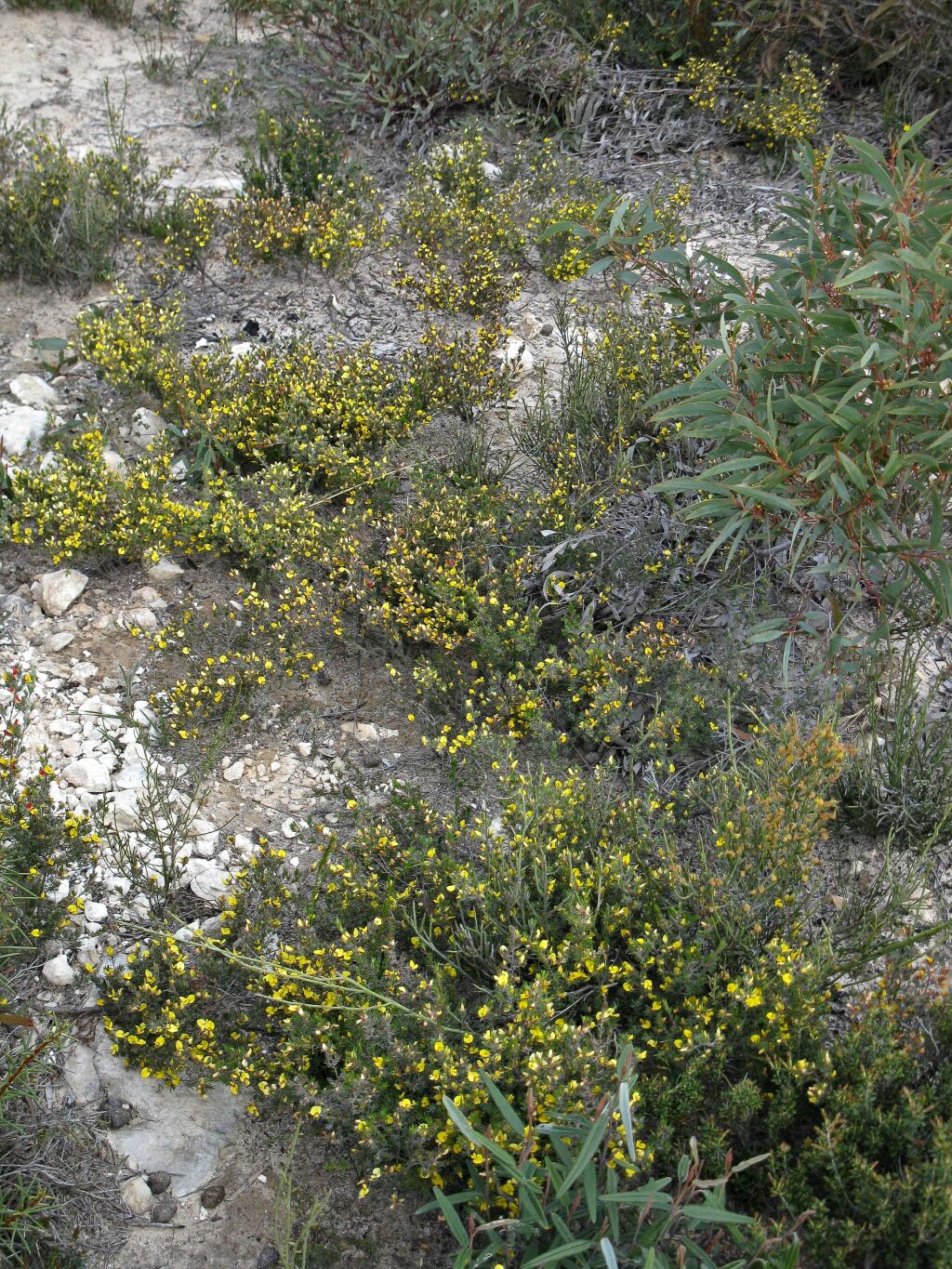Pultenaea tenuifolia
R.Br. ex Sims Slender Bush-peaSpreading shrub to 1 m high, or procumbent to prostrate and mat-forming; stems terete, pubescent or villous, rarely glabrous. Leaves alternate, channelled above, 5–10 mm long, 0.3–0.5 mm wide, often clustered; apex obtuse; lower surface with scattered pale hairs, denser toward base, rarely glabrous; upper surface, if visible, hairy; margin tightly inrolled; stipules lanceolate, 2–3 mm long, midrib conspicuous. Inflorescence of 1 or 2 flowers at tips of short, lateral branches subtended by clustered leaves, ultimate floral leaf usually much reduced with enlarged stipules; calyx 4–5 mm long, tube glabrous, lobes usually hairy, tapered to long, acuminate tips; bracteoles attached at base of calyx tube, ovate to oblong, 2–3 mm long, papery, midrib conspicuous, often hairy, apex usually torn; standard 4–6 mm wide; ovary and base of style hairy. Pod ovate, hairy, exserted from calyx. Flowers Sep.–Nov.
LoM, MuM, Wim, GleP, Brid, VVP, GipP, OtP, WaP, Gold, GGr, DunT, EGL, WPro, HNF, OtR, Strz. Also WA, SA, Tas. Scattered on coastal dunes from near Glenelg River mouth to near Wingan Inlet, but inconspicuous and uncommon. Also on calcareous soils of the Little and Big Deserts.
Coastal variants are procumbent or prostrate with small, mainly pale yellow flowers. Inland variants are usually larger shrubs with larger, often very deep orange and red flowers, although paler, predominantly yellow-flowered forms have been recorded in the Little Desert. There is also great variation in the degree of hairiness, from near glabrous forms to densely bristly plants (e.g. in the far west between Serviceton and Murrayville).
Corrick, M.G. (1996). Pultenaea. In: Walsh, N.G.; Entwisle, T.J., Flora of Victoria Vol. 3, Dicotyledons Winteraceae to Myrtaceae, pp. 765–793. Inkata Press, Melbourne.
 Spinning
Spinning

